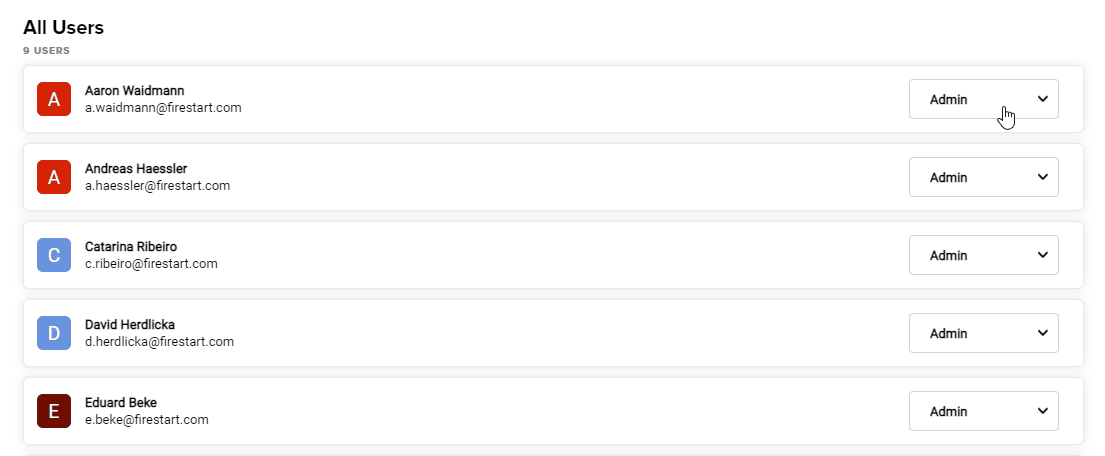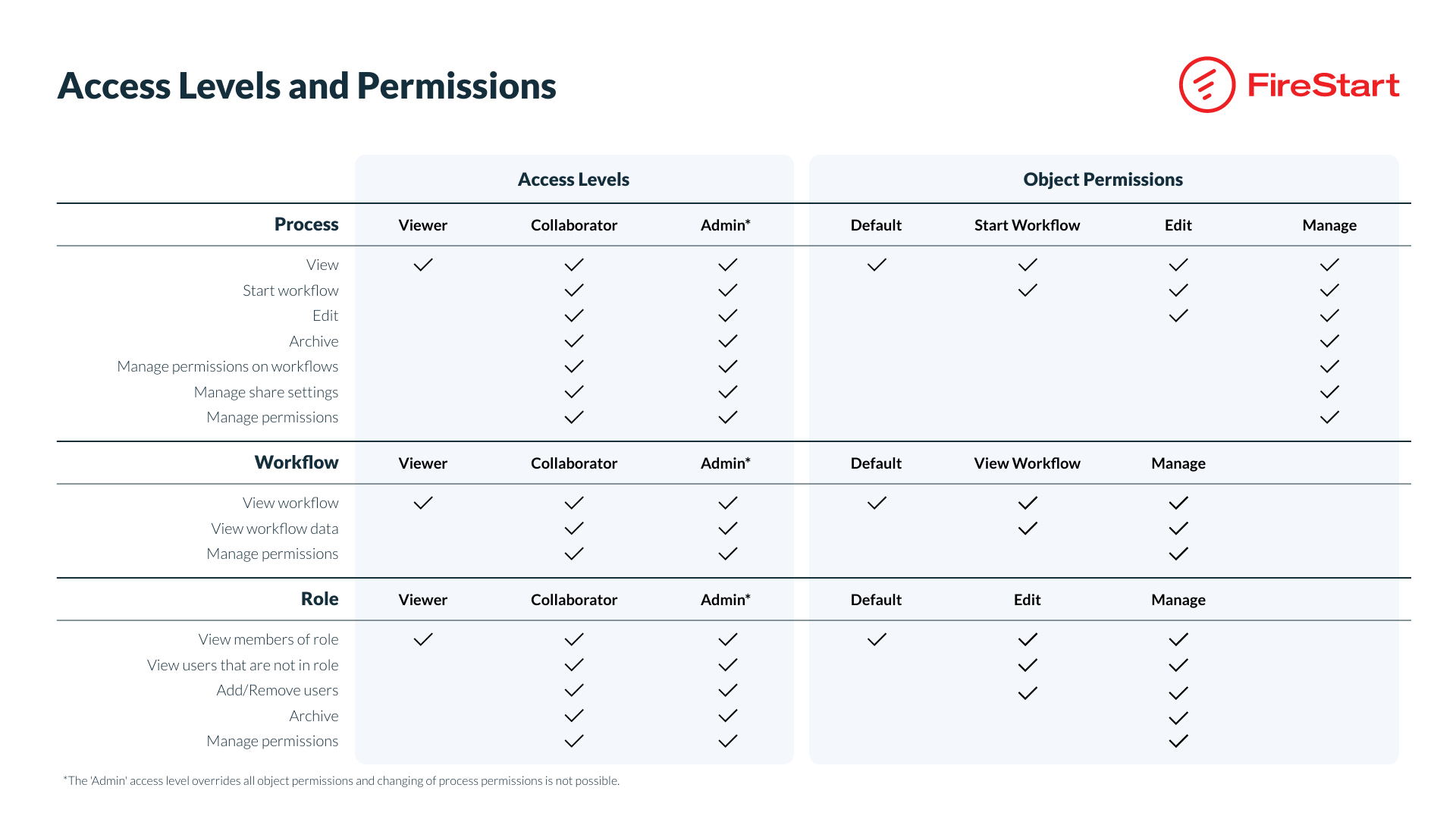Defining permissions in your organization is a crucial part (of the application) for data security reasons. In FireStart Cloud, we differentiate between access levels and object permissions. Access levels determine the (global) permissions to view, use, or edit objects such as processes or workflows in general. Object permissions, on the other hand, determine who can view, use, or manage a specific object. To learn more about object permissions, click here.
Admins can assign access levels via the Users Page. Three tiers of access levels are available:
-
Viewer
-
Collaborator
-
Admin
The following table explains which access levels are assigned to which global permissions:
|
|
Viewer |
Collaborator |
Admin |
|
View Processes |
✅ |
✅ |
✅ |
|
View Workflows |
✅ |
✅ |
✅ |
|
View Forms |
✅ |
✅ |
✅ |
|
View Roles |
✅ |
✅ |
✅ |
|
Complete Tasks |
✅ |
✅ |
|
|
Create Processes |
✅ |
✅ |
|
|
Create Roles |
✅ |
✅ |
|
|
Create Forms |
✅ |
✅ |
|
|
Start Workflows |
✅ |
✅ |
|
|
User Management |
✅ |
||
|
Edit Integrations |
✅ |
Assigning access levels takes effect immediately. Changes are visible to the users after they refresh the page.
Admins cannot change their own access levels - this way we make sure an organization always has at least one user with Admin level permissions.
Note: Changing someone's Access Level to Viewer will also revoke all existing Permissions on all artifacts (processes, roles, workflows).
All newly invited users will have the Viewer access level by default. Once they have accepted their invite, Admins can adjust their access level. For more details on users, click here.



